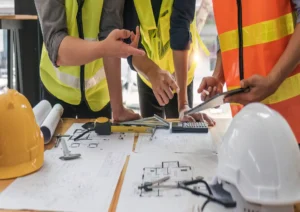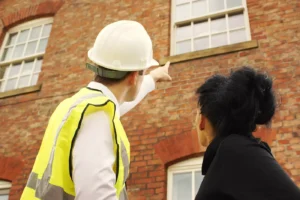Structural Issues Caused by Moisture
Moisture is a common culprit behind structural problems in homes and is often discovered during a house buyers survey. Water ingress over time can weaken wood, cause metal to rust, and lead to the deterioration of masonry. Home buyers frequently encounter issues like cracks in walls and ceilings, and decay in wooden structures. This is often exacerbated by poor ventilation, which allows moisture to linger and create further damage.
Effective Management of Dampness
Dampness not only contributes to structural issues but also fosters an unhealthy environment through the growth of mould. Identifying the source of dampness is crucial, and common sources include leaky roofs, faulty plumbing, and inadequate insulation. Effective management involves promptly repairing leaks, installing proper ventilation systems, and using damp-proofing measures to create a moisture barrier.
Roofing Materials and Durability
The state of a property’s roofing is a crucial element in any House Buyers Survey. Shoddy or aged roofing materials can lead to water intrusion, contributing to damp and structural issues. Inspecting the durability of roofing materials, checking for missing tiles or shingles, and ensuring the integrity of gutters and downspouts are essential steps in the assessment process.
Electrical Safety Concerns
Electrical systems are crucial for modern living but can pose significant dangers if not properly maintained. Surveys often highlight outdated wiring, faulty connections, and inadequate circuit protection, which are common in older homes. Addressing these issues requires a thorough inspection by a qualified electrician, who can recommend necessary upgrades to ensure the system’s safety and efficiency.
Foundation Integrity Checks
A strong foundation is vital for the stability of any property. Surveyors pay close attention to signs of subsidence, which include cracks in walls, sloping floors, and sticking doors and windows. Foundation problems can arise from various issues, such as soil movement, tree roots, or poor construction. Addressing these concerns might involve underpinning, soil stabilisation, or other structural reinforcement techniques.
Dealing with Common Pests
Pest infestations can cause significant damage to properties. Termites, rodents, and woodworms are among the common pests found during house surveys. Detection of pests is crucial, as their presence can lead to structural damage and health risks. Effective pest control includes identifying entry points, sealing cracks, and employing professional extermination services to eradicate the problem.
Minimising Exposure to Environmental Hazards
Environmental hazards such as asbestos, radon, and lead-based paint pose serious health risks. Identifying the presence of these hazards during a survey is critical for the safety of future occupants. Professional assessment and mitigation strategies, such as asbestos removal, radon mitigation systems, and lead paint encapsulation, are recommended to ensure a safe living environment.
Recommendations and Solutions
A comprehensive House Buyers Survey is not only about identifying issues but also providing actionable recommendations. Prospective buyers should seek professional advice on remediation costs and negotiate repairs with the seller. Ensuring that structural, electrical, and environmental concerns are addressed will pave the way for a safe and secure home purchase.






